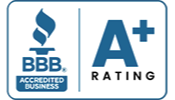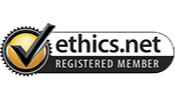Life Insurance Awareness Month: Why Life Insurance Still Matters for High-Net-Worth Retirees
September is Life Insurance Awareness Month, a timely reminder that life insurance isn’t just for young families or people with large mortgages. For high-net-worth (HNW) retirees, the right policy can be one of the most efficient, flexible, and tax-smart tools in the entire estate and retirement planning toolkit. It can deliver liquidity when it’s needed most, protect loved ones and charitable causes, and even stabilize a retirement income plan.
If you’re retired (or near it) and your balance sheet looks strong on paper, you might wonder: Do I still need life insurance? The short answer for many affluent families is yes, though the why and the how look different than they did in your accumulation years.
This guide explains the strategic roles life insurance can play for HNW retirees, the policy types that fit those goals, the design and funding decisions that matter, and how to integrate coverage with your tax, estate, and philanthropic plans.
Why HNW Retirees Revisit Life Insurance
1) Liquidity for Estate Transfer
A portfolio heavy in real estate, privately held businesses, or concentrated stock can create a “wealth on paper” problem at death. Estate settlement costs, taxes, and equalization among heirs require cash, sometimes on a tight timeline. Properly owned and structured, life insurance can deliver immediate, income-tax-free liquidity to trusts or heirs, helping preserve assets that might otherwise be sold in a hurry or at a discount.
2) Smoother Wealth Equalization
If one child will inherit the family business or a large illiquid asset, a survivor policy (second-to-die) can supply equivalent value to non-participating heirs. That can help reduce tension, legal complexity, and the need to carve up cherished assets.
3) Tax Diversification in Retirement
Overfunded permanent life insurance can help provide tax-advantaged access to cash value (when structured and managed correctly) to supplement retirement cash flows. For affluent retirees navigating RMDs, Medicare IRMAA brackets, and capital gains exposure, having another tax-efficient bucket can be valuable for sequence-of-returns protection and opportunistic spending.
4) A Backstop for Long-Term Care (LTC) Costs
Hybrid life policies or policies with LTC/chronic-illness riders can help pay for extended care needs while preserving other assets or fulfilling legacy goals.
5) Philanthropy With Leverage
Life insurance can magnify charitable impact. Policies owned by, or benefiting, a charity or donor-advised fund can transform relatively modest premiums into substantial gifts at death. For HNW families, this may complement qualified charitable distributions, appreciated asset gifts, and CRTs.
6) Business Succession and Key-Person Risks
If you still own a closely held business, policies can fund buy-sell agreements or help protect enterprise value if a key leader passes away unexpectedly.
The Right Policy for the Right Job

Different goals call for different policy designs. Here’s how the most common types fit HNW retiree needs:
Term Life
- Best for: Temporary coverage gaps (e.g., short-term business debt, financing a buy-sell for a limited window).
- Pros: Low initial cost per dollar of death benefit.
- Cons: Premiums rise sharply at renewal; typically no cash value; may expire before the need does.
Guaranteed Universal Life (GUL)
- Best for: Affordable, lifetime death benefit for estate liquidity and legacy needs.
- Pros: Premiums are designed to guarantee coverage to a stated age (e.g., 105 or lifetime). Often lower cost than whole life for pure death benefit.
- Cons: Minimal cash value; limited flexibility if you later want to use the policy for income.
Whole Life
- Best for: Permanent death benefit plus disciplined, contractual cash value accumulation.
- Pros: Guarantees, dividends (not guaranteed), and stable cash value growth can add ballast to a conservative plan.
- Cons: Higher premiums; less flexibility if underfunded early.
Indexed Universal Life (IUL)
- Best for: Permanent death benefit with potential for cash value accumulation tied to an index (with caps/floors).
- Pros: Downside protection via floor, policy design flexibility, potential for tax-advantaged withdrawals/loans when properly funded and managed.
- Cons: Moving parts, caps, participation rates, and charges require conservative assumptions and active management.
Variable Universal Life (VUL)
- Best for: Sophisticated investors comfortable with market exposure inside a policy.
- Pros: Upside potential via sub-accounts; long time horizons can reward disciplined funding.
- Cons: Market risk, higher cost structure, and greater monitoring required.
Survivorship (Second-to-Die) Policies
- Best for: Estate tax and legacy planning for couples; equalization among heirs.
- Pros: Lower cost per dollar of death benefit; pays at the second death when estate liquidity is often needed most.
- Cons: No benefit at first death; must coordinate with trust/ownership structure.
Private Placement Life Insurance (PPLI)*
- Best for: Ultra-HNW families seeking institutionally priced insurance wrappers for tax-efficient investment strategies.
- Pros: Access to custom investment sleeves, favorable tax characteristics, and institutional pricing.
- Cons: Accredited investor requirements, complexity, specialized due diligence, and higher minimums.
*Not appropriate for everyone; requires highly knowledgeable counsel and due care.
Advanced Uses for HNW Retirees
1) Estate Tax Liquidity With an ILIT
An Irrevocable Life Insurance Trust (ILIT) can own the policy, keeping the death benefit outside your taxable estate (when structured correctly). The trustee manages premiums and later distributes proceeds to pay estate costs or support heirs, without swelling the estate tax bill.
Design notes:
- Coordinate annual exclusions or lifetime exemptions for gifts to the ILIT.
- Use Crummey notices to qualify gifts for the annual exclusion.
- Name a capable, independent trustee.
- Align ILIT terms with your broader estate plan.
2) Equalizing Bequests
If a family property or business will pass to one heir, a survivorship policy, owned by an ILIT, can fund equitable distributions to others. This preserves the asset’s integrity while avoiding forced sales or fractional ownership disputes.
3) Premium Financing
For some HNW clients, premium financing (borrowing to pay premiums, using the policy as collateral) can be cost-effective. This strategy is complex and interest-rate sensitive. It demands careful stress testing, clear exit strategies, and a team (advisor, attorney, lender) aligned on roles and outcomes.
4) Split-Dollar Arrangements
Split-dollar (loan regime or economic benefit) can allocate premiums, cash values, and death benefits among parties (e.g., an individual and a trust or business). It’s powerful but technical; ongoing administration and tax reporting are essential.
5) Charitable Planning
- Policy donations: Donate an existing policy or name a charity as beneficiary.
- Leveraged giving: Use policy death benefits to replace assets given to charity during life (e.g., paired with a CRT).
- DAF integration: Combine life insurance with donor-advised fund strategies for control and flexibility.
6) Long-Term Care via Riders or Hybrids
Life/LTC hybrids or chronic-illness riders can draw from the death benefit to cover qualifying care. This can be attractive if traditional LTC coverage is cost-prohibitive or if you want a “use it or not, something pays” structure.
Policy Design: Details That Make or Break Outcomes
Underwriting: Medical and Financial
HNW retirees often face rigorous medical underwriting, especially at older ages or for larger face amounts. Financial underwriting also matters: the insurer must see a clear economic need for the coverage amount (estate liquidity, business interests, charitable intent, etc.). Having your documentation ready (net worth statements, business valuations, estate plans) smooths the process.
Funding Levels and the MEC Line
Overfunding a policy can be attractive for cash value growth, but crossing the Modified Endowment Contract (MEC) threshold changes how distributions are taxed. A well-designed funding schedule targets strong cash value accumulation without MEC status, unless MEC is intentional for a pure death-benefit strategy.
Realistic Assumptions
For policies with non-guaranteed elements (dividends, IUL caps/participation, VUL sub-account returns), design with conservative, stress-tested assumptions. Your plan should work if returns are average or even below.
Charges, Loans, and Policy Hygiene
- Understand policy charges (cost of insurance, administration, riders).
- If you’ll use loans, monitor loan types (fixed vs. indexed or variable), loan spreads, and the relationship between credited rates and loan rates.**
- Schedule periodic in-force illustrations and independent audits to catch underperformance early.
A word on “wash loans”: They’re not always truly “wash.” Terms change; loan rates can reset; and crediting rates can drop. Build a margin of safety and active oversight into your design.
Ownership and Beneficiaries
Misplaced ownership can create unwanted estate inclusion. Align policy owner, insured, and beneficiaries with your legal/estate plan. If using an ILIT or other trust, coordinate titling from day one.
Exit Strategy
What happens if your objectives change after a liquidity event, a business sale, or policy underperformance? Plan for:
- 1035 exchanges to more suitable policies,
- Reduced paid-up options,
- Face amount reductions, or
- Policy surrender (understanding tax implications).
Integrating Life Insurance With Your Broader Plan
Estate Planning
Your estate attorney should help determine whether to use an ILIT, SLAT, dynasty trust, or other vehicles. Life insurance proceeds can fund:
- Taxes and administration costs without forced sales,
- Bequests to heirs and charities,
- Special-needs trusts,
- Generational wealth strategies.
Important: Transfer-tax laws and exemption thresholds can change. Your plan should be flexible enough to adapt as the legal environment evolves.
Tax Planning
Coordinate with your CPA on:
- Premium funding (gifts, loans, or private split-dollar),
- Basis and gain considerations for policy exchanges or surrenders,
- Charitable deductions for policy donations (where applicable),
- Reporting associated with split-dollar and premium financing.
Investment & Retirement Income
Cash-value policies (when properly funded and managed) can act as a volatility buffer in down markets, providing tax-advantaged access to cash that helps reduce the need to sell depressed assets. Conversely, in strong markets, you may rely more heavily on portfolio withdrawals and let cash value continue to grow.
Risk Management & Asset Protection
In some states, policy cash values and death benefits receive creditor protection. These protections vary; coordinate with legal counsel for jurisdiction-specific guidance.
Colorado vs. Connecticut: Life Insurance Key Differences
Life insurance policies can differ between Colorado and Connecticut, mainly because life insurance is regulated at the state level in the U.S. While the basic types of policies (term, whole life, universal life, etc.) are available everywhere, the rules, benefits, and protections can vary depending on where you live. Here are the key differences to be aware of:
1. Regulation and Oversight
- Colorado: Policies are regulated by the Colorado Division of Insurance. They set rules for policy provisions, disclosures, and licensing of insurers and agents.
- Connecticut: Policies fall under the Connecticut Insurance Department, which may have slightly different requirements for policy terms, approval of premium rates, and consumer protections.
2. State-Specific Laws and Protections
- Grace Periods & Free Look: Some states mandate a minimum period for reviewing/canceling a new policy without penalty. The number of days can differ.
- Contestability Periods: While most states follow a 2-year rule, minor variations can exist in enforcement.
- Nonforfeiture Benefits: States may have different rules on cash value accumulation and surrender options.
3. Taxes and Estate Planning
- Colorado: No state inheritance or estate tax, so life insurance payouts are generally free of state-level estate taxes.
- Connecticut: Does have a state estate tax (with exemptions), which could affect very high-value estates. Life insurance proceeds may be included in estate value for tax purposes if not structured properly.
4. Policy Availability and Premium Rates
- Insurance companies may file different products and premium structures in each state. A specific policy or rider (like long-term care or chronic illness riders) might be available in Connecticut but not in Colorado, or vice versa.
- Rates can also vary slightly based on each state’s regulatory environment, demographics, and cost of living.
Bottom Line
While the core idea of life insurance is the same across both states, the rules, taxes, and available products can differ. If you’re comparing policies between Colorado and Connecticut, it’s smart to check:
- The state’s insurance department website.
- State-specific tax rules for high-net-worth individuals.
- Whether certain riders or protections apply differently in each state.
Common Misconceptions for Affluent Retirees
“I’m self-insured; I don’t need life insurance.”
You might be self-insured for income replacement, but not necessarily for liquidity at death, equalization among heirs, or tax-efficient transfer. Insurance can be the cheapest, cleanest source of instant liquidity.
“Permanent policies are always too expensive.”
Cost per dollar of guaranteed, tax-free liquidity, delivered exactly when needed, can be highly competitive versus holding large pools of low-yielding cash for decades.
“My old policy is fine.”
Maybe. But assumptions (dividends, caps, loan rates) and your goals can change. An in-force review may reveal opportunities to reduce costs, right-size coverage, add riders, or 1035 exchange into a better design.
“I’m too old to qualify.”
Underwriting tightens with age, but carriers routinely insure healthy individuals well into their 70s and even early 80s. Face amounts and options may differ, but it’s rarely “too late” to explore.
What a High-Quality Policy Review Looks Like
A thorough review typically includes:
- Goal Mapping: Clarify the job description for your policy: estate liquidity, equalization, philanthropy, LTC backup, tax-efficient cash access, or business succession.
- Coverage Audit: Evaluate existing policies: guarantees, performance vs. original illustration, funding status, loan balances, riders, and ownership/beneficiary alignment.
- Stress Testing: Model conservative assumptions: lower caps/dividends, higher loan rates, and market volatility. Verify that coverage persists and your goals are met even in less-rosy scenarios.
- Design Optimization: If new coverage is warranted, consider survivorship vs. single-life, GUL vs. participating whole life vs. IUL/VUL, funding levels, and riders (LTC, chronic illness, waiver).
- Ownership & Trust Integration: Coordinate ILITs and other trusts to keep proceeds outside the taxable estate and aligned with your legacy intent.
- Implementation & Monitoring: Establish a service calendar: annual in-force illustrations, beneficiary/ownership checks, premium sufficiency confirmations, and periodic estate plan alignment.
Practical Checklist for HNW Retirees
- Do we have a clear job for each policy we own or plan to buy?
- Are ownership and beneficiaries aligned with our estate plan (ILIT if appropriate)?
- Have we stress-tested non-guaranteed assumptions?
- Are we below MEC limits (if tax-efficient access is a goal)?
- Have we reviewed loan provisions and potential rate/cap changes?
- Do we have the right riders (LTC/chronic illness, waiver)?
- Is premium financing or split-dollar appropriate, and if so, fully documented and monitored?
- Are we reviewing in-force illustrations annually and updating our plan as laws and markets evolve?
When to Reevaluate Your Coverage
- Major life events (marriage, divorce, death of a spouse)
- Sale or transition of a business
- Significant changes in net worth or liquidity profile
- New or updated estate documents
- Material changes in health
- Shifts in tax laws or exemption thresholds
- Persistent policy underperformance vs. original assumptions
How Agemy Financial Strategies Can Help

At Agemy Financial Strategies, we’re experienced in integrated retirement and estate planning for affluent families. Our process is collaborative and transparent:
- Discovery & Goal Clarification: We start with your values: the people and causes you care about, the lifestyle you want to sustain, and the legacy you want to leave.
- Policy & Plan Audit: We analyze existing coverage, run fresh illustrations, and benchmark the market for competitive design, capturing both guarantees and flexibility.
- Tax-Smart Structuring: Working alongside your CPA and estate attorney, we design the most efficient ownership and funding approach, ILITs, survivorship strategies, or (when suitable) premium financing or split-dollar structures.
- Conservative Assumptions, Real-World Testing: We stress-test policies with sober assumptions and present clear, decision-useful comparisons to help you choose with confidence.
- Implementation & Ongoing Stewardship: We don’t “set and forget.” Expect periodic in-force reviews, service calendars, and proactive outreach when conditions change.
Our aim is simple: deliver the right amount of liquidity to the right place, at the right time, so your wealth goes exactly where you intend, with as little friction as possible.
Final Thoughts
Life insurance during retirement isn’t about fear; it’s about control. Control over taxes and timing. Control over family harmony. Control over which assets get preserved and which get spent. For high-net-worth retirees, the correct policy, properly owned, conservatively designed, and actively maintained, can be the quiet engine that keeps your plan running smoothly long after you’re gone.
Let’s Put Your Plan to the Test
If you haven’t reviewed your life insurance (or your broader estate and retirement plan) in the past 12 months, Life Insurance Awareness Month is the perfect time.
Schedule a complimentary Policy & Legacy Review with Agemy Financial Strategies.
We’ll map your goals, audit existing coverage, identify gaps and opportunities, and, if warranted, design a solution that fits your family, your numbers, and your values.
Ready to begin? Contact Agemy Financial Strategies today to book your review and take the next step toward a more secure, intentional legacy.
Disclaimer: This content is for educational purposes only and should not be considered financial or investment advice. Please consult with the fiduciary advisors at Agemy Financial Strategies before making any investment decisions.














